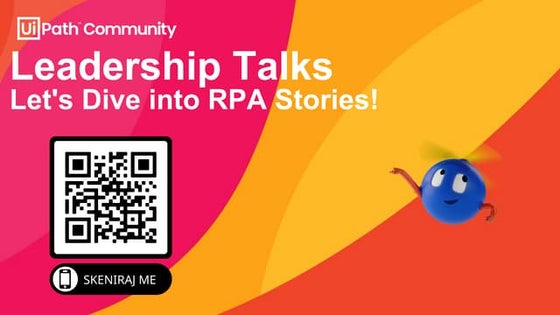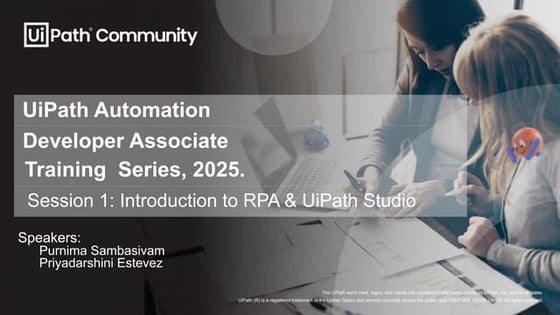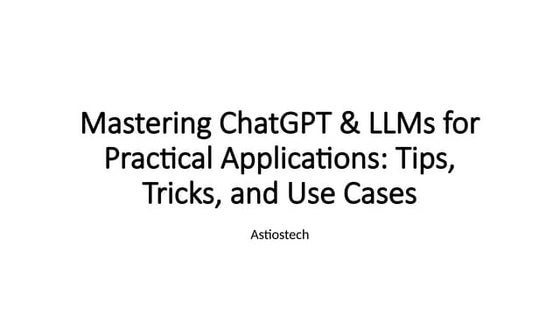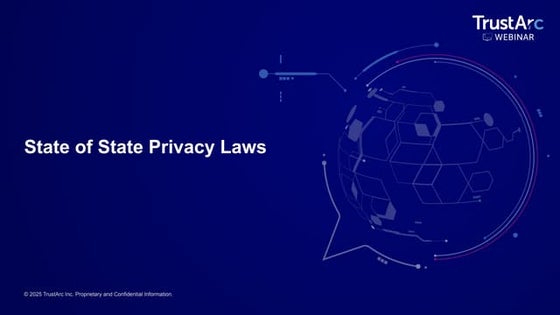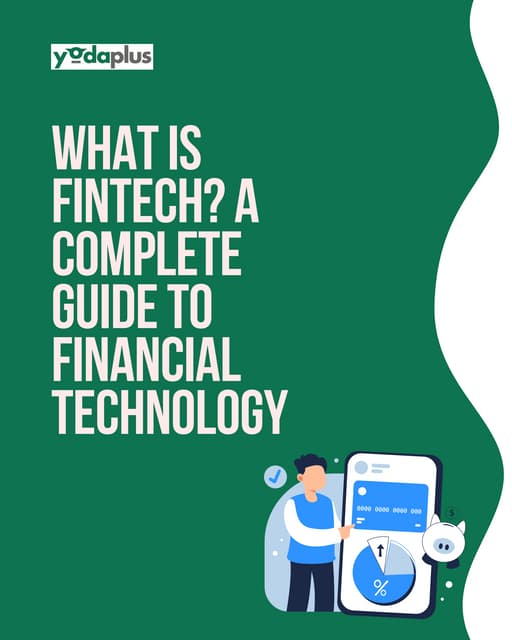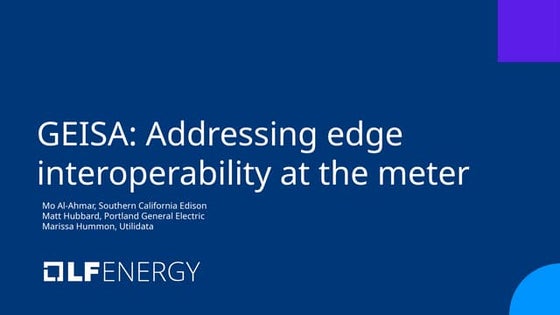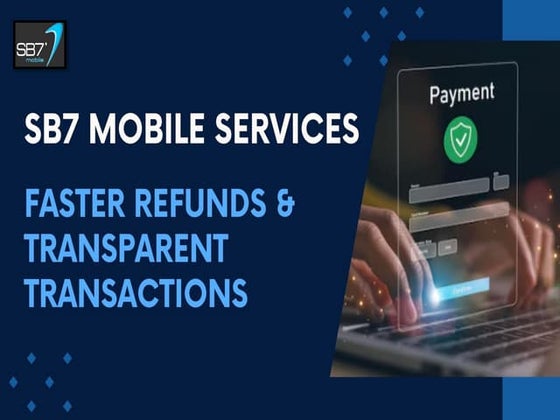IBM Collective Intelligence Talk - UNSW CASE STUDY V3
- 1. ╠²
- 2. eMed :: Faculty of Medicine UNSW luc betbeder faculty of medicine, UNSW. a case study
- 3. eMed :: Faculty of Medicine UNSW a leading university
- 4. eMed :: Faculty of Medicine UNSW a knowledge workplace
- 5. eMed :: Faculty of Medicine UNSW undergraduate medicine
- 6. eMed :: Faculty of Medicine UNSW my audience
- 7. eMed :: Faculty of Medicine UNSW my team
- 8. eMed :: Faculty of Medicine UNSW new medicine program new curriculum new approach to assessment our journey
- 9. eMed :: Faculty of Medicine UNSW a curriculum map graduate capabilities the portfolio new concepts
- 10. eMed :: Faculty of Medicine UNSW ŌĆ£ a portalŌĆØ with ŌĆ£lots of linksŌĆØ ŌĆ” requirements start to grow a new system?
- 11. eMed :: Faculty of Medicine UNSW lots of documents web web web granular security with roles requirements
- 12. eMed :: Faculty of Medicine UNSW nothing on the shelves hacking can be ŌĆ£lose / loseŌĆØ opportunity: make it as you need it buy or build
- 13. eMed :: Faculty of Medicine UNSW custom + iterative partners + in-house licensed + open to boldly go
- 14. eMed :: Faculty of Medicine UNSW the core databases
- 15. eMed :: Faculty of Medicine UNSW items in a context student perspective academic perspective collective intelligence
- 16. eMed :: Faculty of Medicine UNSW student intelligence timetable + map navigating the degree
- 17. eMed :: Faculty of Medicine UNSW demo from timetable to map
- 18. eMed :: Faculty of Medicine UNSW from timetable to map
- 19. eMed :: Faculty of Medicine UNSW academic intelligence asking the map know thyselfŌĆ”
- 20. eMed :: Faculty of Medicine UNSW demo asking the map
- 21. eMed :: Faculty of Medicine UNSW collective intelligence map + portfolio + results building a portfolio
- 22. eMed :: Faculty of Medicine UNSW demo submit/mark/review
- 23. eMed :: Faculty of Medicine UNSW submit/mark/review
- 24. eMed :: Faculty of Medicine UNSW intelligence systems not IT systems used every day measuring success
- 25. eMed :: Faculty of Medicine UNSW [email_address] luc_betbeder on twitter all the photos are mine ┬® flickr.com/betbeder thanks
Editor's Notes
- #3: a case study (intro) ╠² morning everyone. My name is luc and I am the IT Manager for the Faculty of Medicine at the University of New South Wales. ╠² the case study I want to share with you today is an application that we call eMed. ╠² but before I jump into the app and possible demo meltdown I just want to give you a little bit of context and set the scene
- #4: a leading university ╠² UNSW is one of Australia's leading research and teaching universities and has about 40,000 students and 1,500 staff ╠² That makes us bigger than many towns in Australia ╠² It's a great place to study and it's a great place to work. ThatŌĆÖs my sales pitch done.. ╠² But one point I want to make is that it really is a workplace with a culture of collaboration and innovation
- #5: a knowledge workplace.╠² ╠² It's a knowledge workplace where people are passionate about learning and teaching on a daily basis.╠² ╠² and so, themes like todayŌĆÖs "collective intelligence" are really important to our core business.╠² ╠² (benefit of today? say something nice about previous talks...) ╠² One thing that I like to think we are providing is a continuous output of change agents into the workplace ╠² And so the systems that we use are really important because they are the tools that the students are going to become familiar with and will expect to use in the workplace ╠² Email and the web ...
- #6: undergraduate medicine ╠² the Faculty of Medicine at UNSW is one of the few places in Australia that offers a six year undergraduate medical degree. ╠² We currently have about 1500 students in years 1-6 ╠² the very top high school students from Australia and overseas come to UNSW to study medicine and itŌĆÖs the job of the Faculty to turn them from high scoring high school students into someone you will feel confident hovering over you in a hospital within six years. ╠² We are also an incredibly research intensive Faculty and so many of our teachers are not only delivering courses but carrying out major research projects.
- #7: my audience ╠² And so the audience for my systems are on the one hand these bright young university students who are actually very mature users of online and collaboration tools.. they will live inside my systems for at least six years.. ╠² and on the other hand I have these super busy academics with brains the size of planets who are knowledge experts in their particular disciplines╠² but who also need to be told where to go to teach on any given day╠² ╠² And so I have to get both of these audiences together or I end up with an empty lecture room╠² ╠² As you can imagine, with this kind of an audience, I get a lot of feedback on how our systems are performing. ╠² They are incredibly critical but also, I must say, incredibly supportive.
- #8: my team ╠² so thats one of the challenges my team faces as we support many of the internal IT systems of the Faculty. ╠² we are a small specialist IT unit internal to the Faculty and we have a mandate to support specialist research and teaching activities within the faculty. ╠² as a result we get to be involved in some wonderful projects.. over the last few years we have developed ╠² a wireless barcode tracking system for the body parts in our Morgue ╠² and a Virtual Microscope system that will support over 80 students doing a Google earth syle zoom into the same tile at the same time ╠² today tho I want to talk to you about our journey with our eMed system
- #9: our journey ╠² our journey with eMed properly starts back in 2002-3 when the Faculty proposed a very significant overhaul to the undergraduate degree ╠² the new medicine program would include massive changes to both the content of the curriculum and to how it would be assessed. ╠² This was in response to some major shifts ╠² There was a changing community expectation of doctors.. that they should be able to communicate and work in teams.. we wanted to address that in the curriculum ╠² There were also major shifts in patterns of health and disease with increased focus on chronic illnesses.. and a huge expansion of new knowledge within the biomedical sciences.. these kinds of developments needed to be included in ╠² And lastly there was a massive shift in information technology allowing much more expanded access to expanding sources of information. ╠² So from the very start there was an expectation that new program would use IT resources and systems more extensively.. ╠² both as internal tools for the students but also as part of their professional development.
- #10: new concepts ╠² the new medicine program also introduced some new key new concepts that would shape our decisions. ╠² First, there is this concept of a curriculum map that would contain each and every learning activity in the degree. ╠² Everything we teach would be in the map ╠² Secondly, we have this concept of graduate capabilities. 8 Key attributes we want all of our graduates to possess... ╠² .. things like "effective communication" or " working as a member of a team" or "patient assessment and management" and "ethics in medicine". ╠² And so every item inside the map, everthing we teach and assess against is targeted at these 8 capabilities. ╠² lastly, there is this concept of the portfolio.╠² ╠² The portfolio contains everything that a student submits over the six years of their degree. ╠² And everything they submit is marked against the graduate capabilities. And so there is this growing store of data about how they are tracking against what we are teaching.
- #11: a new system ╠² So we started thinking about what kind of IT system we would need to support the program and these new concepts. ╠² we knew we wanted it to be a place where all the relevant undergraduate activities could sit and so we had this picture of a portal that had lots of links between the key components ╠² this was mid 2002 and the concept of a web portal was only a fairly recent one and enterprise portal technologies were╠²only just coming onto the market ╠² and so with the deadline of our students starting in 2004 we started thinking seriously about what our requirements for this system would be.
- #12: requirements ╠² we knew we would need to handle lots of different types of documents.. from timetable data to marks, to learning activities and assignment submissions.. ╠² every item for 6 years of coursework and 6 years of assignments for 1500 would need to be managed.. ╠² preferably we wanted as system that would use our concepts and our terms so that the huge amount of work that was going on in the restructure of the teaching program would be mirrored in the IT system ╠² we also knew that it all needed to be web based. Our audience would be using the system from home and campus and from behind hospital firewalls so web technologies were very important to us from the start ╠² lastly we knew that roles and a very granular role based security model would be very important to us. We would have lot of items where we wanted to show some things to teachers and some things to students ╠² Obviously we wanted to keep our marking secure. So security was very important.
- #13: buy or build ╠² today these are pretty normal requirements but back in 2002 we could not find anything off the shelf to buy that really looked like it would fit╠² ╠² bolting on to or hacking an existing app was also considered but again we would be compromising a lot on our key concepts ╠² I also tend to think that hacking existing tools can be a dangerous compromise. You donŌĆÖt get exactly what you want and you are still paying for some customising .. for me thatŌĆÖs a lose lose proposition. ╠² we knew that building a new system would cost us more on the development side but we also knew that we had an opportunity. ╠² We did not need to get absolutely everything done for day one. ╠² On the teaching side, they would be actively creating new content and processes each year and we could, to a certain extent.. mirror that. ╠² As the students moved through the degree we would be laying down the railway tracks in front of them and so we needed an approach and tools that would flexible enough to cope with all of these goals ╠² with all of that in mind we decided to boldly go forth...
- #14: boldly to ╠² ╠² we would set out on a 7 year journey ╠² to release a new application, tailored to our program that would iterate the development through at least 6-10 major releases ╠² we would use a partnership with a good code shop to get the big fist version one out the door... thanks go to NotesApps who did a great job ╠² and then our approach would be to build up internal skills for both for support and to provide an aggressive schedule of feature releases. ╠² On the technology side we decided to leverage the some of the real benefits we found in lotus notes and domino for rapid application development in terms of ready made forms, views, security and the like (which saved a huge amount of time ) along side using a range of more open web frameworks like Java ╠² with the hindsight of seven years I am still very happy with the choices we made.. ╠² Oh and seeing William Shatner at lotusphere this year was lots of fun.. thanks IBM.
- #15: the core databases ╠² right from the start we started thinking of eMed as a collection of individual web-facing databases. ╠² This helped us break up the development work into parallel projects. ╠² For example, we could work on the Map with one set of users and requirements and not halt progress on a simpler system like results. ╠² This is still how we work and we are still improving this set of core databases as well as occasionally adding one when we absolutely have to. ╠² For example, we just finished a major update to the Timetable but Results has remained almost unchanged for 3 years.
- #16: Collective intelligence ╠² I want to show you how eMed is used by our students and academics ╠² But, as we go through these examples, I want to point out how having individual items correctly linked into contexts can powerfully build into how we see collective intelligence approaches working in our organisation.
- #17: navigating the degree ╠² The first example is one our students face every day and that is navigating their way through their degrees ╠² In foundations, which is the first course our students do, they will be involved in 95 discrete learning activities. In total, our students will pass through 1458 mapped activites in their 6 years. ╠² So the map provides the overall contex but the very first interaction students normally have with a course is through their timetables. ╠² So what we want to provide to the students is a constant link between timetabled activities and how these activities are placed within the context of their course and degree. ╠² LetŌĆÖs try to see that in action.
- #18: DEMO or use this SLIDE ╠² So in this slide I'm showingŌĆ” ╠² a student in timetable will click on an entry in their timetable for more information ╠² They can then link to the map for even more details and contextual information. ╠² They can find out how what that activity is targeting in terms of Graduate Capabilies and see if there are any additional resources. ╠² They can then see how that resource fits into the overall course and how that course fits within the degree. ╠² Item in their right context provide our students with additional intelligence on their activities.
- #19: DEMO or use this SLIDE ╠² So in this slide I'm showingŌĆ” ╠² a student in timetable will click on an entry in their timetable for more information ╠² They can then link to the map for even more details and contextual information. ╠² They can find out how what that activity is targeting in terms of Graduate Capabilies and see if there are any additional resources. ╠² They can then see how that resource fits into the overall course and how that course fits within the degree. ╠² Item in their right context provide our students with additional intelligence on their activities.
- #20: know thyself ╠² The second example I want to show you is on the academic side... ╠² Here I want to show you how we use the map as our knowledge base of our courses and assessments and activities. ╠² This is where we store our secret sauce.. everything we know about ourselves is in the Map. ╠² We have a rule that nothing goes into the timetable unless it is mapped first. ╠² And we review the content of each item in the map whenever we teach it. Because the content is not just internal but external also. ╠² So the map becomes the place we can think about the big picture. We can ask it questions like.. are we teaching enough about cancer and what kinds of assessments do we have on cancer. ╠² LetŌĆÖs do that now...
- #21: Asking the map ╠² DEMO or use this SLIDE ╠² ╠² So I go into map and map search ╠² And I type in Cancer ╠² And see that there are 165 different kinds of items in the map about Cancer ╠² ╠² Im interested in lectures only... and there are 55 lectures ╠² And i want to know how we assess all that teaching.. and I see that there are 8 assignment choices available on this keyword search.. ╠² Its a database.. of course it can search.. its not even that pretty a search. The point is not in the search or in the IT. The point is that the content is there and is being used. ╠² It is an intelligence system before it is an IT system.
- #22: building a portfolio ╠² the last example I want to share with you is around building the studentŌĆÖs portfolio ╠² as our students submit items for marking they become part of their portfolios. ╠² Every single assessment item over 6 years is stored in the portfolio system. ╠² and each of these items is marked, it is marked against the graduate attributes and feedback is provided. ╠² and so we build intelligence on how that student is performing over the course of their degree╠² ╠² And this is a collective intelligence based on both student content and the feedback provided by the academics. ╠² Let me show you what that looks like.
- #23: submit/mark/review ╠² DEMO or use this SLIDE ╠² ╠² Here we have this process of a student submitting an assignment.. which is done online╠² ╠² and a marker marking that assignment .. again this is done online.. not showing you that part ╠² and then the student looking at their marks .. ╠² and note that this is within the context of all their other marks. ╠² So as a student builds their portfolio .. they will need to show competence in all 8 graduate capabilities .. ╠² and so there is a feedback loop as students will pick their next assessments based on what they still need to cover and on the feedback from previous assignments. ╠² We use this system to guide the students and at years 2, 4 and 6 we carry out a complete review of the current status of each student's entire portfolio to get a clear picture of how they are performing ╠² so there is this constant evaluation over 6 years based on the information provided in the portfolio. ╠² The portfolio has become such a key part of the degree that when a student graduates we provide them with a copy showing every mark and every word of feedback on each graduate attribute.
- #24: submit/mark/review ╠² DEMO or use this SLIDE ╠² ╠² Here we have this process of a student submitting an assignment.. which is done online╠² ╠² and a marker marking that assignment .. again this is done online.. not showing you that part ╠² and then the student looking at their marks .. ╠² and note that this is within the context of all their other marks. ╠² So as a student builds their portfolio .. they will need to show competence in all 8 graduate capabilities .. ╠² and so there is a feedback loop as students will pick their next assessments based on what they still need to cover and on the feedback from previous assignments. ╠² We use this system to guide the students and at years 2, 4 and 6 we carry out a complete review of the current status of each student's entire portfolio to get a clear picture of how they are performing ╠² so there is this constant evaluation over 6 years based on the information provided in the portfolio. ╠² The portfolio has become such a key part of the degree that when a student graduates we provide them with a copy showing every mark and every word of feedback on each graduate attribute.
- #25: measuring success ╠² I just want to end up with a couple of points on how I measure the success of a system like this one. ╠² Yes we got it out on time and yes it is incredibly stable ╠² But the real metric for me is, can it answer the questions the questions my audience asks on a daily basis... ╠² Can it tell me how many students in year 1 right now.. 273 ╠² Can it tell me how many leaning activities in Ageing and Endings include the topic of pain? 22 ╠² Can I find out easily how this one student is perfoming in terms of their effective communication graduate attribute.. yes ╠² If it is an effective intelligence system and our users are using it on a daily basis then IŌĆÖm happy
- #26: thanks for your time.
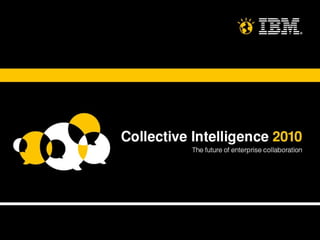























![eMed :: Faculty of Medicine UNSW [email_address] luc_betbeder on twitter all the photos are mine ┬® flickr.com/betbeder thanks](https://image.slidesharecdn.com/collectiveintelligencetalk-v3-100304050427-phpapp02/85/IBM-Collective-Intelligence-Talk-UNSW-CASE-STUDY-V3-25-320.jpg)

























